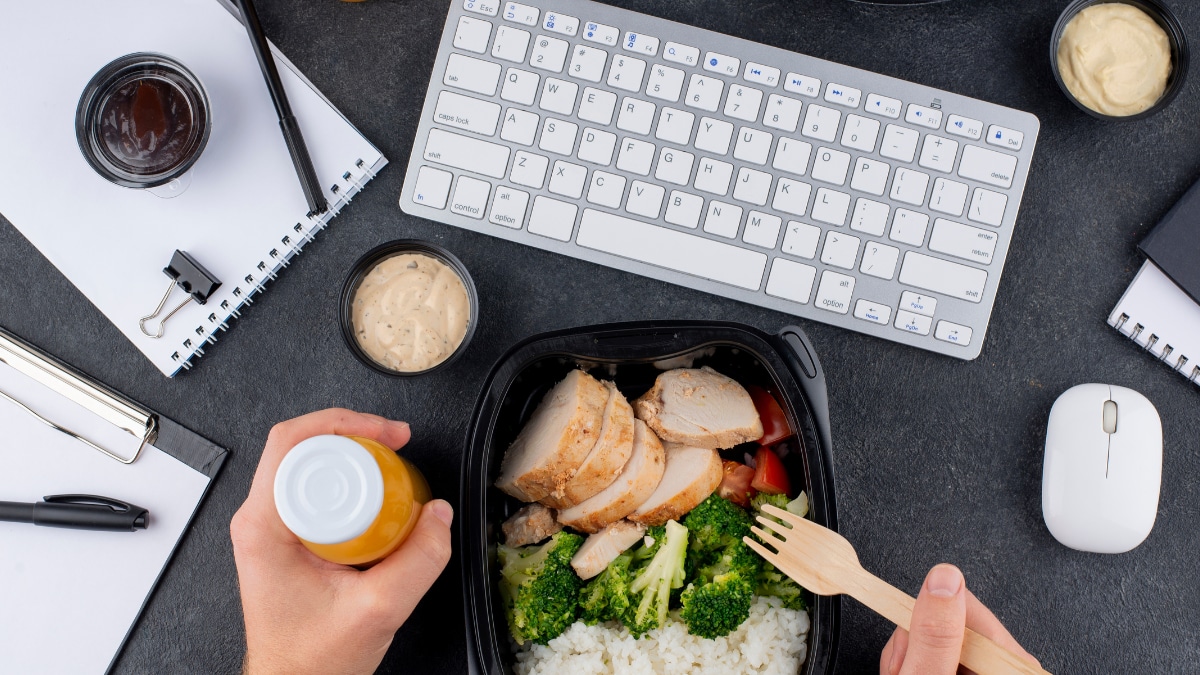Ready-To-Eat Meals Makes Eating Healthy Easier and More Convenient – News18

Ready-to-eat meals that are appropriately portioned can support healthy eating by providing controlled serving sizes
Ready-to-eat food made from organic ingredients with no preservatives, sourced from accredited farmers etc. can be healthy
Ready-to-eat food industry has undergone a revolution and evolution. It has come a long way since its introduction in India. From instant noodles, frozen veggies, soup, and frozen snacks. To now ready-to-eat authentic Indian recipes like palak paneer, khichdi etc, the industry has changes for the better. The sector has adapted to changing consumer demands who are looking for convenient but healthy options. Rapid urbanization, fast-moving millennials, increasing income growth, shifting middle-class population, and changing taste inclinations of Indian shoppers are all be factors in this shift.
There is now a growing desire for ready-to-cook meals that eliminate the need for time-consuming vegetable cutting especially in urban areas. This shift in food consumption has created a whole new market for ready-to-eat brands.
Ready-to-eat food made from organic ingredients with no preservatives, sourced from accredited farmers etc. can be healthy. When it is with nutritious ingredients and prepared in a way that preserves their nutritional value, ready-to-eat meals can help individuals lead a healthy lifestyle. Ishit Pilani, Co-Founder, Organic Roots shares insight about how read-to-eat food can help individuals lead to a healthy lifestyle:
- Nutrient-Rich Ingredients
Healthy ready-to-eat meals can be made with nutrient-rich ingredients such as whole grains, lean proteins, fruits, vegetables, legumes, and healthy fats. These ingredients provide essential vitamins, minerals, fiber, and other beneficial compounds that support overall health and well-being. - Balanced Macronutrients
Healthy ready-to-eat meals aim to provide a balance of macronutrients, including proteins, carbohydrates, and fats. This balance helps sustain energy levels, support bodily functions, and promote satiety. - Portion Control
Ready-to-eat meals that are appropriately portioned can support healthy eating by providing controlled serving sizes. Portion-controlled meals can help individuals manage their calorie intake and prevent overeating. - Nutritional Labeling
Many ready-to-eat food products include nutritional labeling, providing information about the calories, macronutrients, and micronutrients they contain. This allows individuals to make informed choices based on their dietary needs and goals. - Convenience and Time-Saving
Ready-to-eat meals can help individuals incorporate healthy options into their busy lifestyles by saving time on meal preparation. This convenience can encourage people to choose healthier options rather than relying on unhealthy fast food or processed snacks. Variety and Flexibility: Ready-to-eat food options have expanded significantly in recent years, and there is a wide range of choices available, including options for different dietary preferences, such as vegetarian, vegan, gluten-free, or low-calorie. This variety can help individuals follow their desired eating patterns and make healthier choices that suit their needs. - Dietary Specialties
Ready-to-eat food options often cater to specific dietary preferences or requirements, such as vegetarian, vegan, gluten-free, or low-calorie diets. These specialty options allow individuals to find meals that align with their dietary needs and goals.
Striking a balance is key. The consumer must ensure to supplement their diet with fresh, wholesome food along with healthy ready-to-eat meals.
For all the latest lifestyle News Click Here


